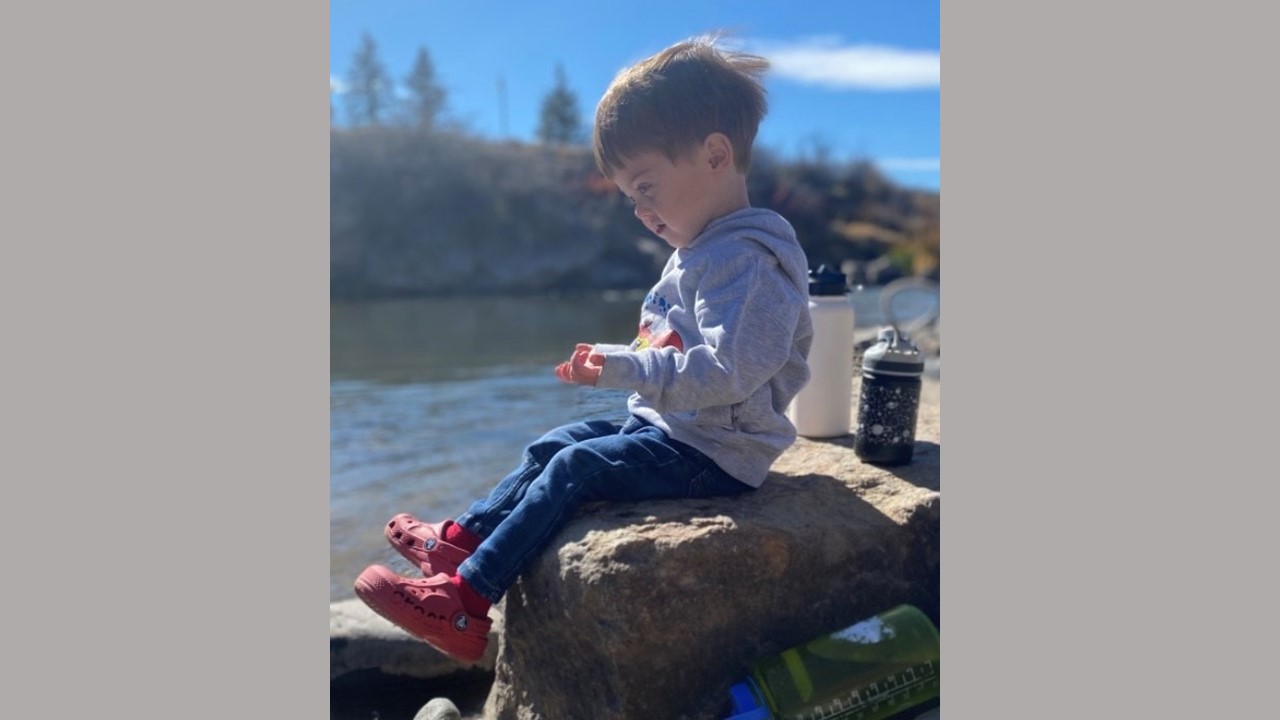Johns Hopkins Children’s Center Doctors Fix a Hole to Save a Newborn Baby
04/19/2022

Sarah Gonzalez was just 13 weeks pregnant in 2018 when she received “terrifying” news during a routine ultrasound. Her unborn baby, whom they planned to name Sullivan, or “Sully,” had a congenital diaphragmatic hernia (CDH). “It was this brand new thing that we had never heard of,” Gonzalez says, recalling the reaction she and Sully’s father, James, had when they learned about the condition. “It was weird to wrap our heads around what we were dealing with. This is fatal to a lot of kids.”
CDH happens when a hole does not close during the development of a baby’s diaphragm, a large, thin muscle that separates the chest from the abdomen and helps in inhalation and exhalation. With CDH, organs in the abdomen, like the intestines, stomach and liver, can push through the diaphragm hole into the baby’s chest, crowding the lungs and preventing them from developing completely. It is a common birth defect, but the severity of the condition can range from mild to life-threatening. While the cause of CDH is often unclear, researchers believe it may be attributed to a baby’s genetics.
The Gonzalez family was referred to The Johns Hopkins Hospital, where Ahmet Baschat, M.B.B.CH., B.A.O., director of the Center for Fetal Therapy, was conducting a trial for a minimally invasive experimental procedure called fetoscopic endotracheal occlusion (FETO) to treat severe cases of CDH. During the procedure, a balloon is inserted into the fetus’ trachea to block it, which prevents fluid from escaping and increases the size of the lungs. The in-utero procedure can allow the baby’s lungs to develop more fully and increase survival.
The hole in Sully’s diaphragm was large — the size of an adult fist. His liver, part of his spleen, stomach and small intestines had moved through the hole in his diaphragm. After some tests, Sully became one of 14 babies who qualified for FETO. The procedure allowed Sully’s lungs to continue to grow, and the balloon was removed six weeks later.
Sully was born full term in August 2018. He was rushed to the pediatric intensive care unit, where he was placed on an extracorporeal membrane oxygenation machine to provide extra support for his heart and lungs. Over the next few days, Sully’s body was strong enough to fix the hole in his diaphragm.
“The surgery to repair CDH should be done when the baby has been stabilized, to give the baby the best chance of survival,” says pediatric surgeon Shaun Kunisaki, M.D., who oversees the Johns Hopkins Children’s Center Fetal Program and is the surgical director of the CDH program. Kunisaki did not perform Sully’s CDH repair, but has performed more than 50 CDH repairs over his career.
Because of the size of the hole in Sully’s diaphragm, surgeons used a synthetic material compatible with Sully’s tissue as a patch to cover the hole. The surgery went well, but Sully faced ongoing severe pulmonary hypertension, or elevated blood pressure in the lungs, related to CDH. Adding to the pulmonary hypertension, Sully’s patent ductus arteriosus, a blood vessel present in all infants in the womb that closes within 24 to 72 hours of birth, did not close on its own as it should have. When Sully was 7 weeks old, in September 2018, Children’s Center cardiologists closed the patent ductus arteriosus through a cardiac catheterization procedure.
In November 2018, the hole in Sully’s diaphragm re-herniated while he was still in the hospital. “They noticed he became irritable, and that was one of the first signs,” Gonzalez says. A chest X-ray confirmed that his organs were beginning to push up through his diaphragm again. Sully underwent another procedure to fix the re-herniated hole.
“With kids like Sully who had no diaphragm on one side, they have up to a 50-50 chance of the hole re-herniating,” Kunisaki says.
Sully recovered and was well enough to be discharged from the Children’s Center in January 2019. He transferred to Mt. Washington Pediatric Hospital, an affiliate of the Children’s Center, where he received occupational and physical therapy until he was 7 months old.
Once home, Sully continued to grow. Gradually, he no longer needed additional oxygen support, medication and a feeding tube. In August 2021, he graduated from occupational and physical therapy. He started walking just before his third birthday.
“There were so many odds stacked against [Sully],” Gonzalez says. “There were so many times that we thought we were never going to bring him home.” She adds that she never imagined Sully would be doing as well as he is now, because of the severity of his condition.
Sully’s medical team, which includes experts from surgery, cardiology, pulmonology, nutrition and many other specialties, continues to follow Sully’s progress. He now visits a clinic specifically for CDH once a year.
Sully, who is 3 years old, loves books and playing with construction and fire trucks and toy building bricks like Legos. He will be starting preschool in the fall. His parents understand that he “may not be a marathon runner,” Gonzalez says, but they don’t think he will need to be restricted to certain activities.
“Long term, he’s always going to deal with the effects of his CDH,” Gonzalez says. “But he is completely different from what we had heard he could be. We were not expecting this at all.”
Sully’s doctors agree the combination of expert fetal intervention and multidisciplinary postnatal care greatly transformed Sully’s health, and his experience has led to improvements in CDH care.
Gonzalez, Baschat and Kunisaki are available for media interviews to share details about Sully’s experience and CDH.
April is Congenital Diaphragmatic Hernia (CDH) Awareness Month to raise awareness about the condition.
